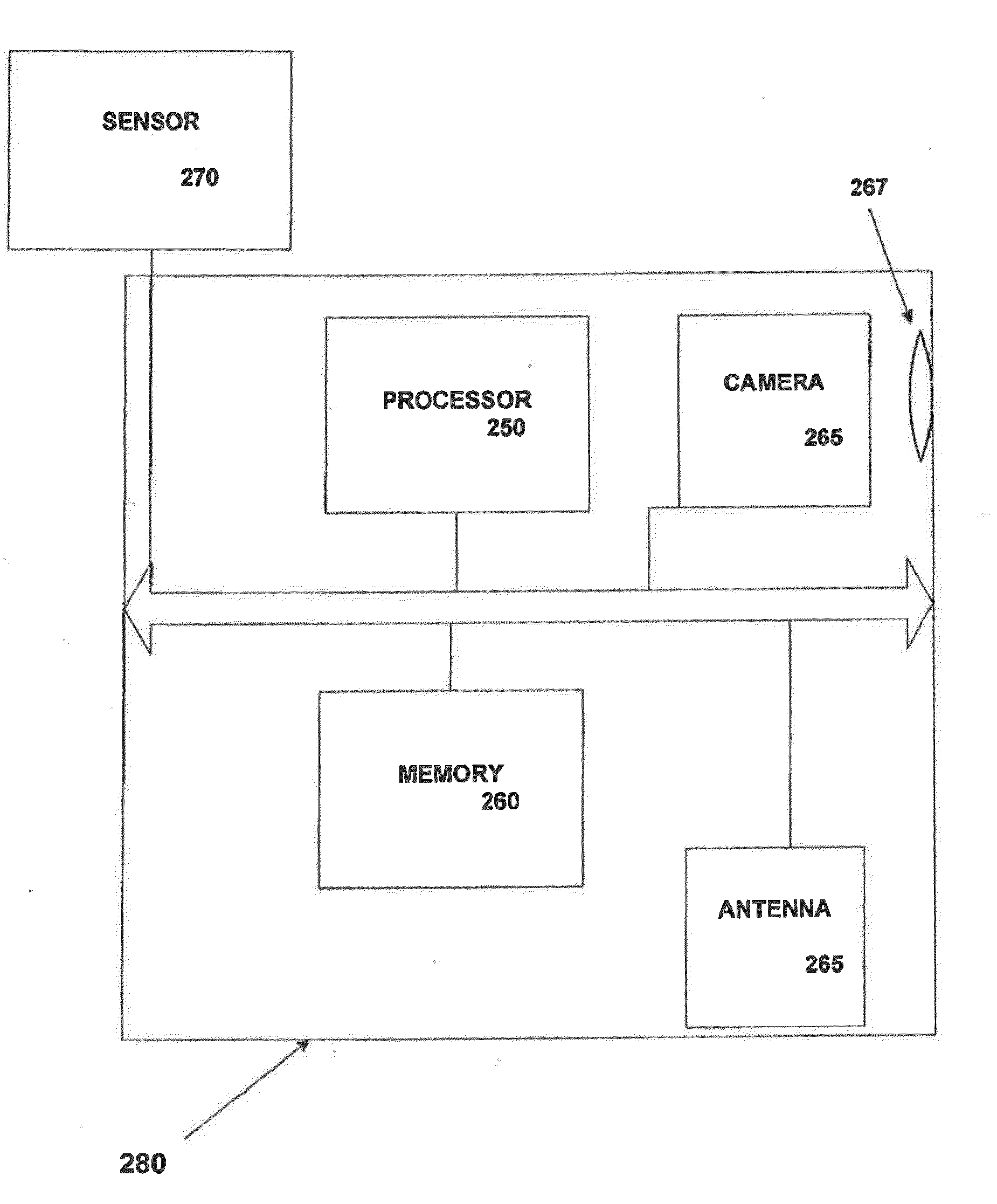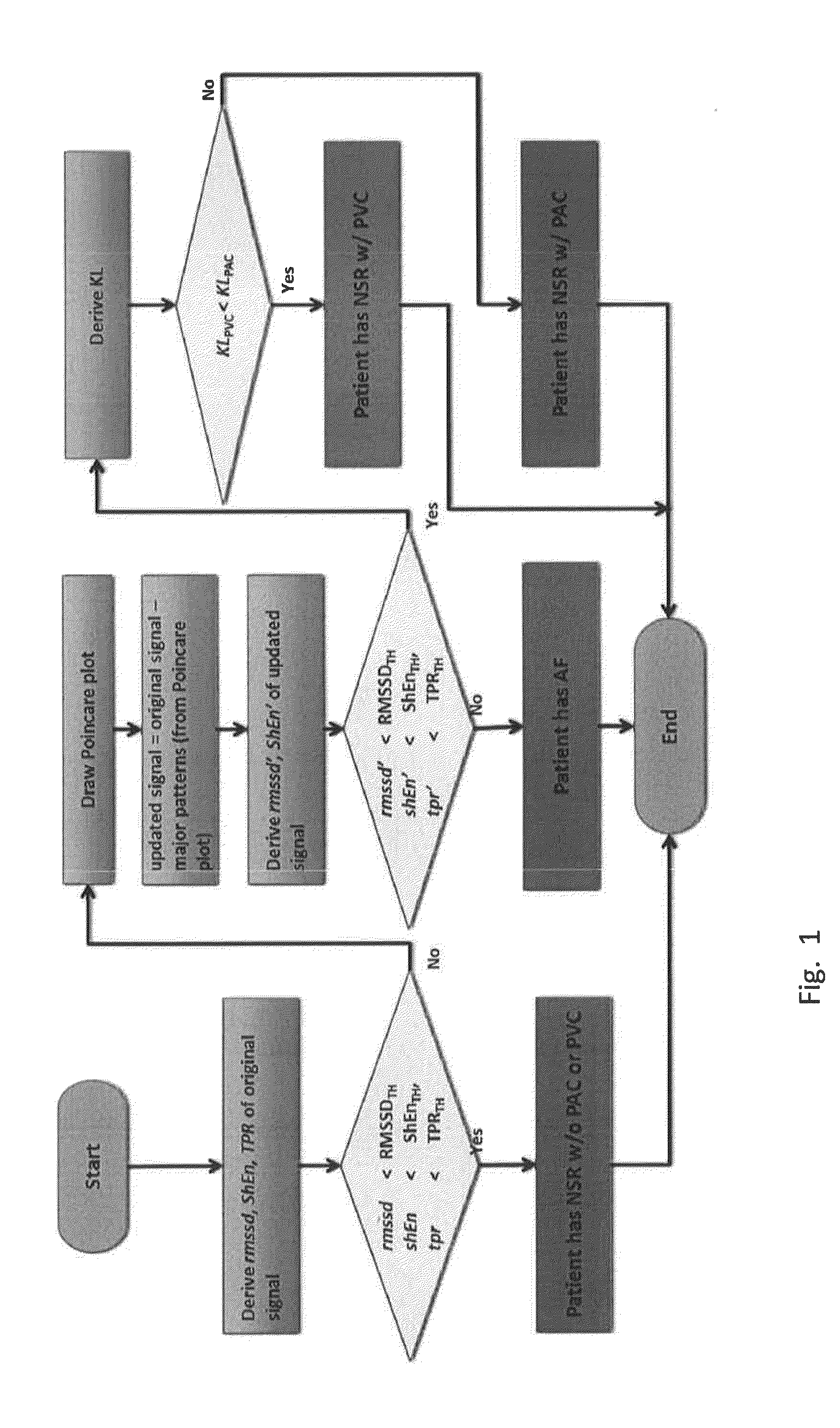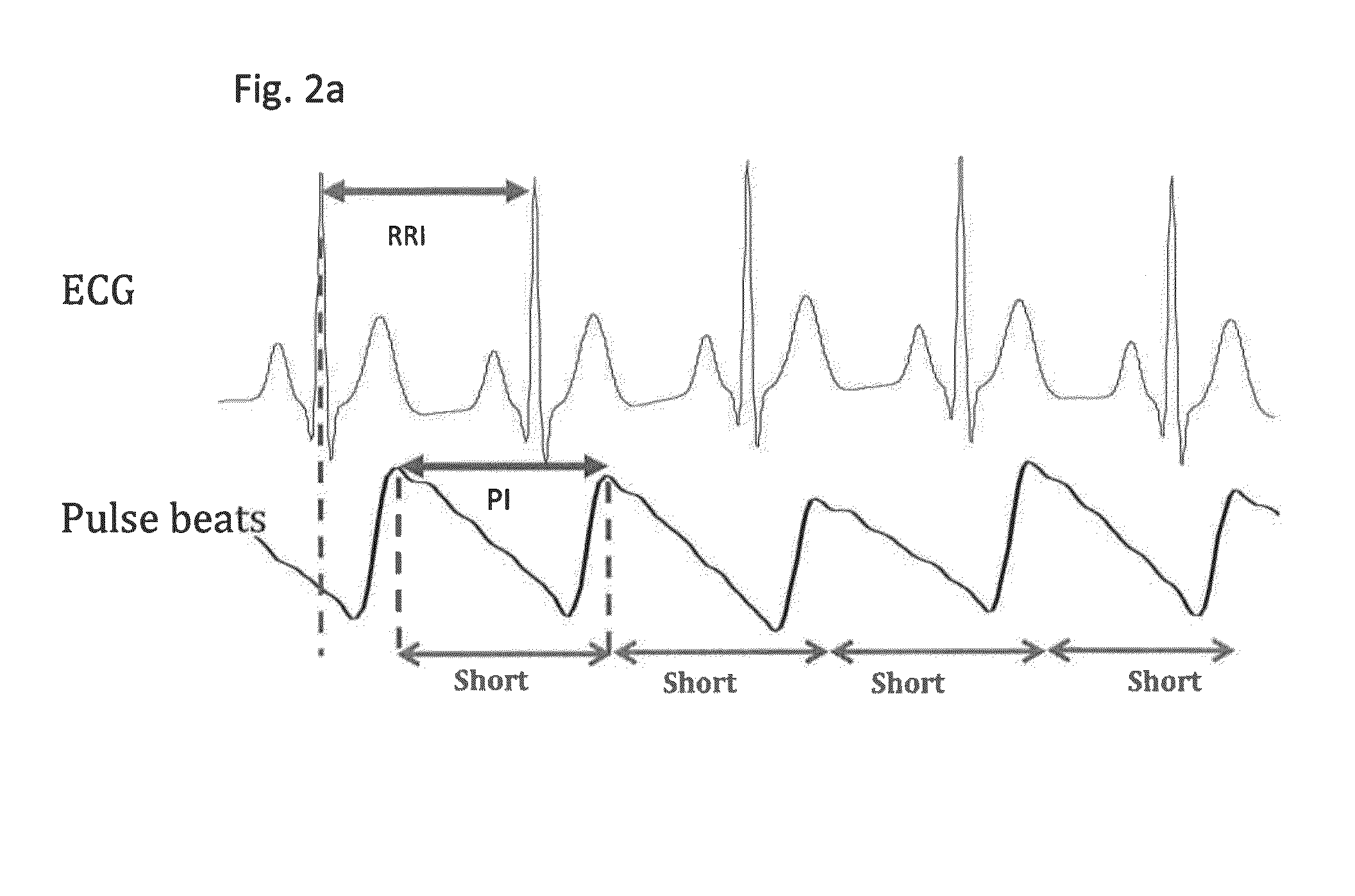Detection and monitoring of atrial fibrillation
- Summary
- Abstract
- Description
- Claims
- Application Information
AI Technical Summary
Benefits of technology
Problems solved by technology
Method used
Image
Examples
Embodiment Construction
[0024]The following detailed description presents the currently contemplated modes of carrying out the invention. The description is not to be taken in a limiting sense, but is made merely for the purpose of illustrating the general principles of the invention, since the scope of the invention is best defined by the appended claims.
[0025]Current AF algorithms: A number of algorithms have been developed to detect AF and can be categorized as being based on 1) P-wave detection or 2) RR interval (RRI) variability. Since there is no uniform depolarization of the atria during AF, there is no discernible P-wave in the ECG. This fact has been utilized in detection of AF by trying to identify whether the P-wave is absent. However, in most cases the location of the P-wave fiducial point is very difficult to find and often corrupted by noise that is inherent in surface measurements. The methods in the second category do not require identification of the P-wave and are based on the variability...
PUM
 Login to View More
Login to View More Abstract
Description
Claims
Application Information
 Login to View More
Login to View More - R&D
- Intellectual Property
- Life Sciences
- Materials
- Tech Scout
- Unparalleled Data Quality
- Higher Quality Content
- 60% Fewer Hallucinations
Browse by: Latest US Patents, China's latest patents, Technical Efficacy Thesaurus, Application Domain, Technology Topic, Popular Technical Reports.
© 2025 PatSnap. All rights reserved.Legal|Privacy policy|Modern Slavery Act Transparency Statement|Sitemap|About US| Contact US: help@patsnap.com



